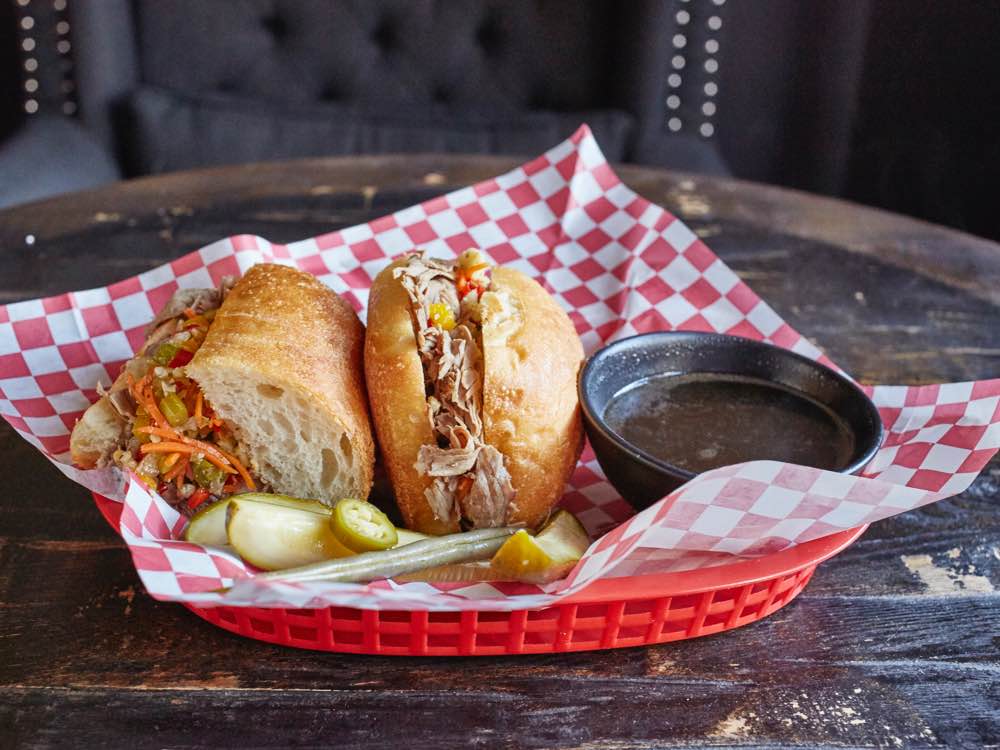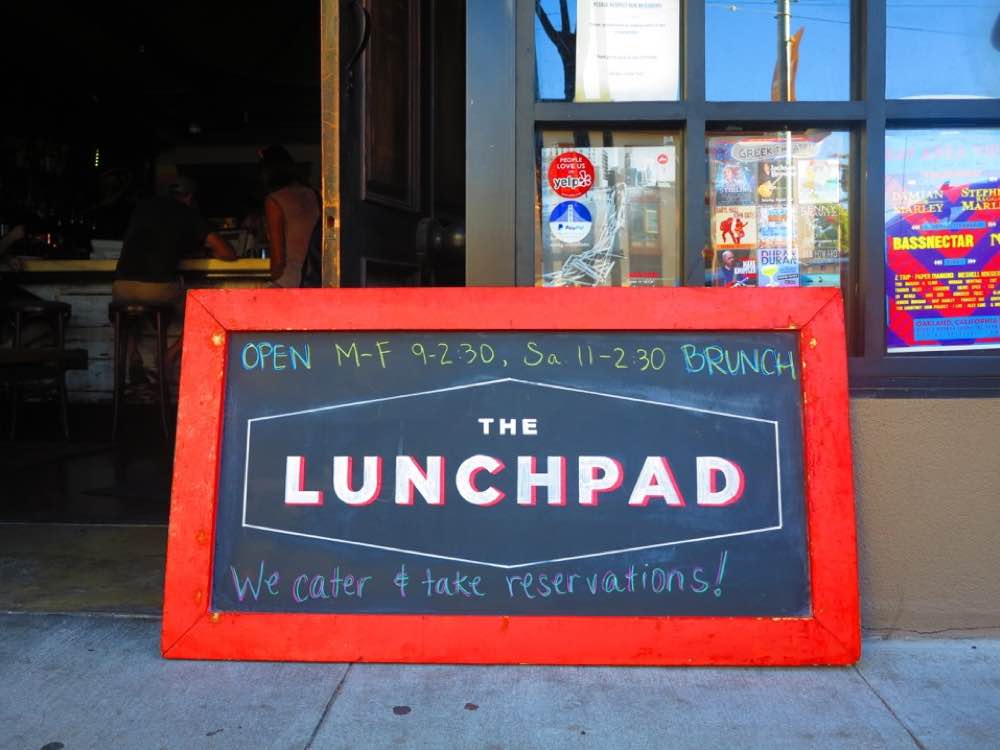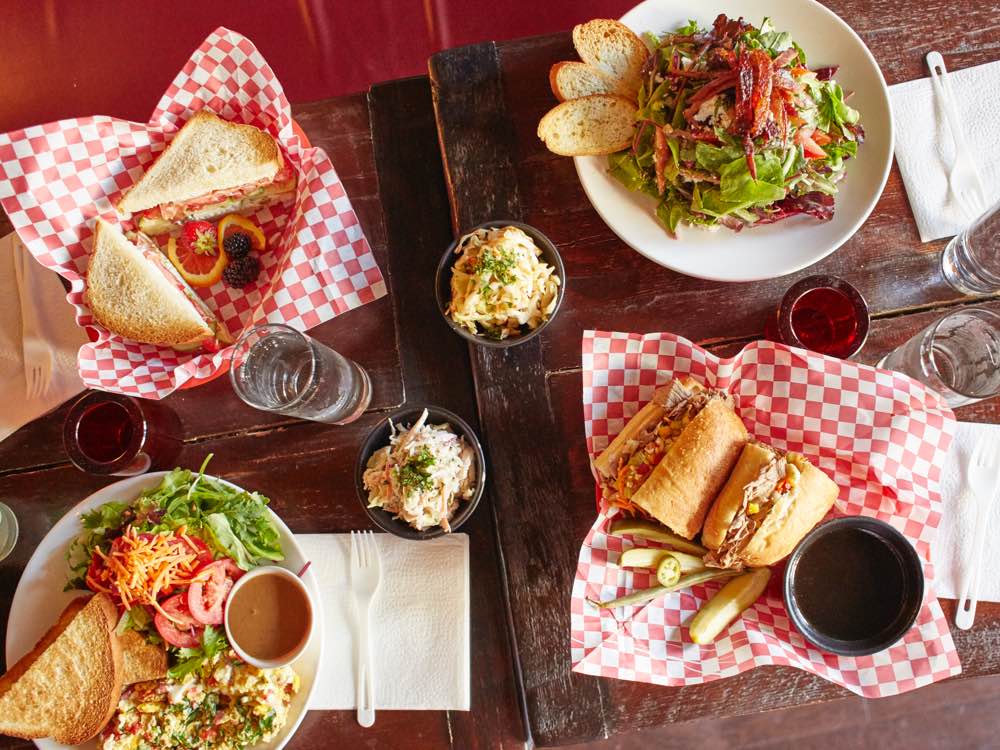Unless you’ve eaten nothing but takeout for the past five years, you’ve probably noticed that “pop-up” restaurants have grown quite popular. And why not? There’s clearly a demand for authentic street tacos at cocktail bars. But pop-ups also make financial sense: for restaurant owners with kitchens laying dormant throughout the day as well as plucky restaurateurs wishing to make a splash without all the risks associated with opening a brick-and-mortar.
One such man-of-gumption is Adam Hubbell, who runs The Lunchpad in San Francisco’s Hayes Valley neighborhood. His pop-up’s longevity pays tribute to its success: Since 2013, he’s served up lunch to throngs of people as a guest in the same kitchen each week. The numbers don’t lie. Each week Hubbell sells an estimated 1400 sandwiches, all out of a kitchen that would otherwise sit dark until the host establishment, Noir Lounge, ramps up its dinner service in the late afternoon.

If you are an entrepreneur in the restaurant industry, you’ve at least pondered the idea of jumping on the pop-up bandwagon (after all, it’s more than a fad by many accounts). But is a pop-up right for you? I asked Hubbell to weigh in on some of the pros, cons, and lessons he’s learned after four years in the hoagie game.
PRO: The Ever-Nimble Pop-Up
The first thing Hubbell points out that is that pop-ups require much lower initial investment than brick-and-mortar restaurants. Obviously, if you’re using someone else’s joint, you’re not the one putting up the dough for a 10-year lease on a space, nor are you buying all new equipment, decorations, or anything else associated with starting a restaurant from scratch.
He also points out that pop-ups are also less chained to their initial concept; flexibility is built into the structure of the business. “It’s kind of low-risk because you can change things pretty rapidly. If something’s not working, you can change your product on the fly. You’re not tied down to one thing,” says Hubbell. “It allows you to be more creative, and it allows you to hash out all the details of your product and streamline your business before you launch it to a brick-and-mortar. It’s a great stepping stone.”

CON: The Ever-Elusive Pop-Up
One of the biggest hurdles Hubbell faced in getting The Lunchpad off the ground (so to speak) was putting the word out about his business. “When you’re a pop-up you don’t have permanent signage, and that’s a real challenge,” he says. Even though he’s been sharing the same kitchen for four years, people in the neighborhood will still drop in, having never heard of his business.

He points to the need for an aggressive social media presence, especially if you plan to move around between several different locations throughout the month. “PR people can be expensive, but if you use Facebook, where it costs you five bucks to boost a post to 1,000 people, that’s a way cheaper way of doing things,” he says. “However, it can be hard to quantify the return on investments like that.
“But there are ways to gauge that,” he continues. “You can offer a free bag of chips if someone says a secret word from a post. Then take a tally of how many people said the secret word and that can give you a good idea of how effective a social media blast is.”
LESSON: Learn To Do More With Less
While those running pop-up restaurants enjoy lower operating costs and all the trappings of an already-functioning eatery, they also must tackle the issue of sharing a space with strict time constraints. To this end, Hubbell says it’s imperative to develop a positive relationship with the owner of the restaurant or bar you choose to set up shop. “It needs to be a solid, trusting relationship because you’re trusting them to be around your supplies while their operation’s going, and vice versa. It turns into kind of a roommate situation.”
Once you’ve entered a blood-pact with your brick-and-mortar host, it’s time to figure out how to make the best use of your time while you’re there. Hubbell’s operation is allotted a third of Noir Lounge’s food storage space, and he’s only there from the morning to the late afternoon, so that means no nighttime food prep, and low sales for the first half of the time he’s paying to be in the kitchen.

“When you’re there for limited hours, you really need to maximize what you’re doing there,” says Hubbell. “We chose catering to be the way to optimize our time. We prepare all our catering orders in the morning, then we have a lunch rush, and then we’re done. We don’t have the option to be there at night, so we just need to do as much as possible while we’re there and make it as profitable as can be.”
























































































































































